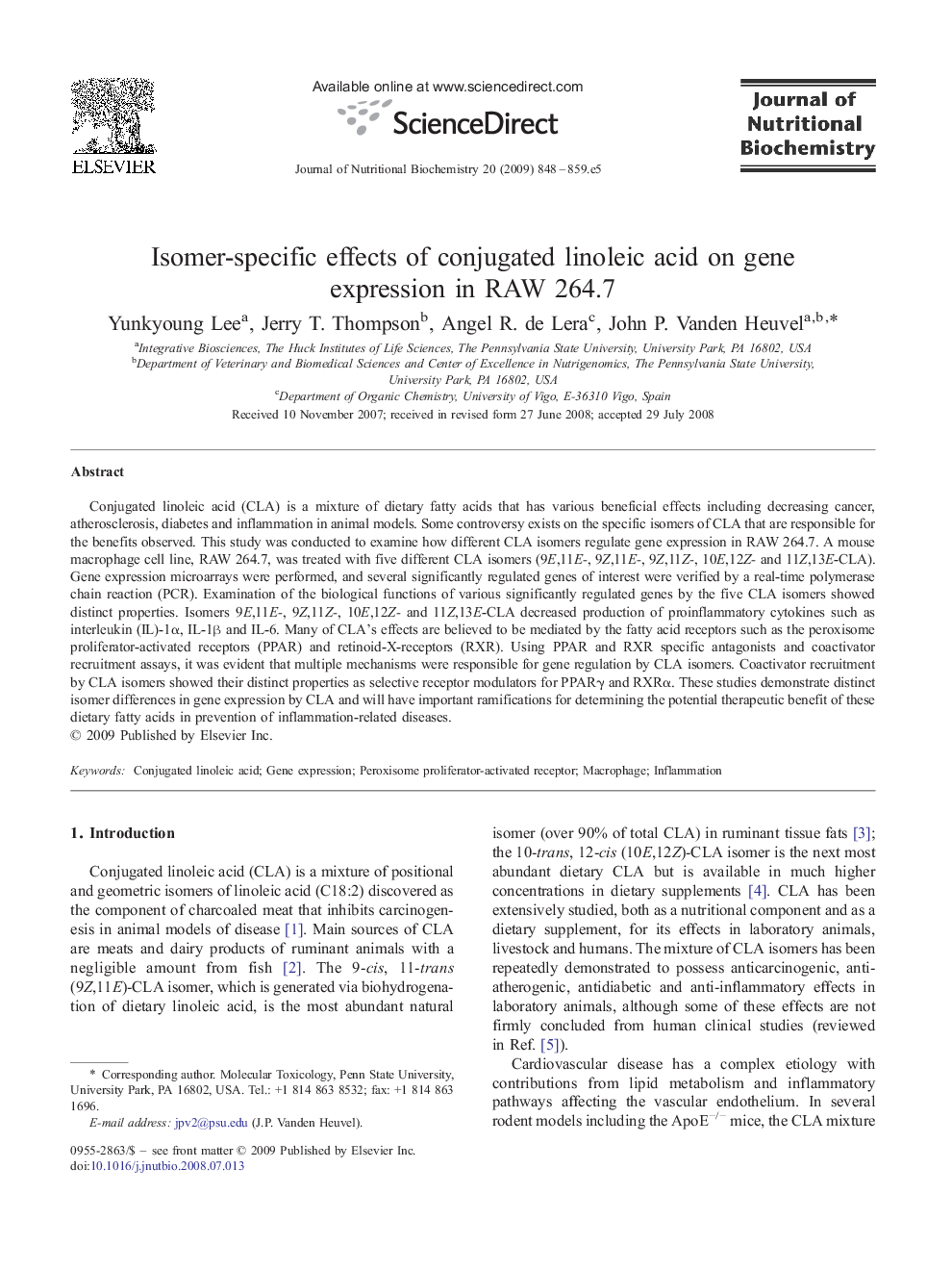| Article ID | Journal | Published Year | Pages | File Type |
|---|---|---|---|---|
| 1990065 | The Journal of Nutritional Biochemistry | 2009 | 17 Pages |
Abstract
Conjugated linoleic acid (CLA) is a mixture of dietary fatty acids that has various beneficial effects including decreasing cancer, atherosclerosis, diabetes and inflammation in animal models. Some controversy exists on the specific isomers of CLA that are responsible for the benefits observed. This study was conducted to examine how different CLA isomers regulate gene expression in RAW 264.7. A mouse macrophage cell line, RAW 264.7, was treated with five different CLA isomers (9E,11E-, 9Z,11E-, 9Z,11Z-, 10E,12Z- and 11Z,13E-CLA). Gene expression microarrays were performed, and several significantly regulated genes of interest were verified by a real-time polymerase chain reaction (PCR). Examination of the biological functions of various significantly regulated genes by the five CLA isomers showed distinct properties. Isomers 9E,11E-, 9Z,11Z-, 10E,12Z- and 11Z,13E-CLA decreased production of proinflammatory cytokines such as interleukin (IL)-1α, IL-1β and IL-6. Many of CLA's effects are believed to be mediated by the fatty acid receptors such as the peroxisome proliferator-activated receptors (PPAR) and retinoid-X-receptors (RXR). Using PPAR and RXR specific antagonists and coactivator recruitment assays, it was evident that multiple mechanisms were responsible for gene regulation by CLA isomers. Coactivator recruitment by CLA isomers showed their distinct properties as selective receptor modulators for PPARγ and RXRα. These studies demonstrate distinct isomer differences in gene expression by CLA and will have important ramifications for determining the potential therapeutic benefit of these dietary fatty acids in prevention of inflammation-related diseases.
Keywords
Related Topics
Life Sciences
Biochemistry, Genetics and Molecular Biology
Biochemistry
Authors
Yunkyoung Lee, Jerry T. Thompson, Angel R. de Lera, John P. Vanden Heuvel,
